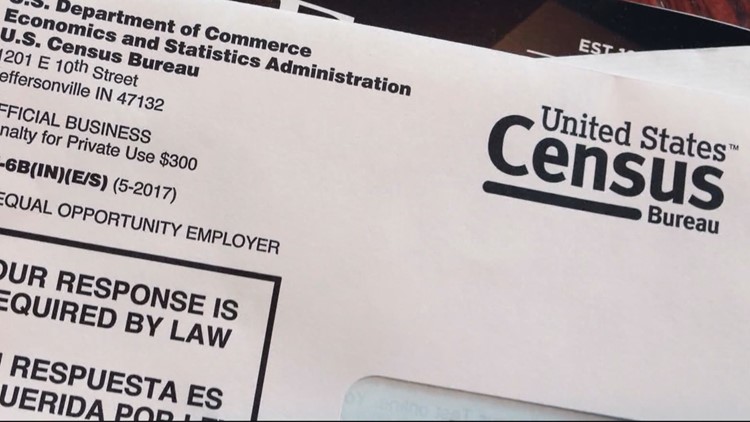CALIFORNIA, USA — Census officials have noticed an unexpected trend amid the pandemic: Residents in California’s wealthiest enclaves aren’t filing out their surveys since they appear to be sheltering in vacation homes and secondary residences.
Malibu’s response rate is down more than 20% from the 2010 census. Beverly Hills is off by 10%. And in the beachside enclave of Carmel-by-the-Sea, it’s down 21%.
With data collection set to close early at the end of this month, state officials and academics are calling attention to California’s own Manhattan effect. Just as New York City is suffering from depressed response rates as affluent New Yorkers flee to second homes, the same is happening in pockets across California. The problem is further exacerbating an already challenging year for California’s census count amid fears of low turnout and widespread undercounting of immigrant and Black residents.
“There’s odd patterns this year,” said Natalie Masuoka, associate professor of political science at UCLA who teaches an undergraduate course on the census. “In dense, majority-white areas, they either chose to relocate from those hotbeds of COVID spread, or we also saw a lot of folks from some wealthy areas get stuck abroad.”
An undercount of Californians has real-world consequences because it could cost the state a seat in the U.S. House of Representatives and less federal funding for affordable housing and anti-poverty programs, not to mention money for roads and infrastructure to school lunches.
But the irony is that Malibu’s low census participation rate won’t really hurt Malibu — or most other wealthy areas in Los Angeles. The impact will be felt instead by poorer communities that rely on taxpayer-funded social safety nets. That means hard-to-reach census tracts like Boyle Heights with below-average rates of English-language proficiency, college degrees and broadband access will receive even less.
“The wealthy will feel the impact (of a census undercount) at a much lower rate,” Masuoka said. “They’ll feel it less in public school funding because a higher percentage of their children go to private schools. They’re less reliant on social services.
“While wealthy areas do enjoy a lot of public services, like beaches and parks, you could speculate that if there is an undercount, they could personally fund them themselves. That’s not an option in a lot of other places.”
The Legislative Analyst’s Office found that the 1990 census missed 2,7% of California, costing a House seat and losing out on at least $2 billion in federal funds that decade. Researchers don’t expect complete compliance — the idea is that, as long as the undercount in California is proportionate to the undercounts in other states, the state won’t lose out.
But significant undercounts in usually reliable areas makes that a more risky proposition, especially if people in wealthy areas in states like Texas and Florida have stayed in their primary residences. As of this week, the national response rate is 65.1%. California is tracking at 67.4%.
To get a better count, California allocated $187 million on the 2020 census outreach efforts, especially in hard-to-reach areas. Still, state officials are worried about losing momentum given the federal government’s decision to cut short the counting period by four weeks.
A coalition of cities, counties and civil rights groups are challenging the shortened schedule in San Jose federal court alleging the bureau shortened its schedule in order to ensure that the process of counting people used to redraw congressional districts happens under the Trump administration’s watch.
President Trump has also called for the exclusion of undocumented migrants from apportionment, a directive that would dramatically affect California, particularly Los Angeles County and most counties in the San Joaquin Valley, which have higher percentages of undocumented migrants among their population.
Los Angeles Regional Census Center spokesman Donald Bendz said the census is still on track to finish its count in time. When asked about Trump’s comments on excluding undocumented migrants, Bendz said the Census Bureau’s mission is to count every living person in the U.S.
The Census Bureau isn’t out of options if people don’t mail back their forms or answer the census taker’s knock on the door. They can ask neighbors, or even the postal carrier.
Bendz said that in a few cases — fewer than 1% of all households — the census will turn to information people have already provided to the federal government: submissions to the IRS, information on file with the Centers for Medicare and Medicaid Services and any other federal department that might have information on the number of people living in a household.
“When a small community has to make a request for federal dollars, the first place (the federal government) is going to look is at their census numbers,” Bendz said. “That’s why we have been urging people to do their part for their own communities.”
This article is part of The California Divide, a collaboration among newsrooms examining income inequity and economic survival in California.



